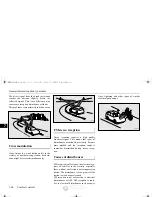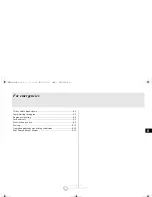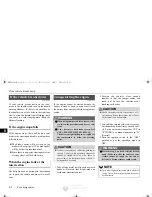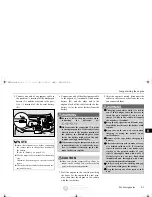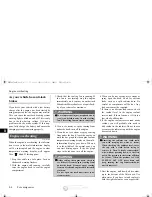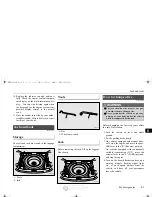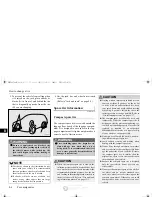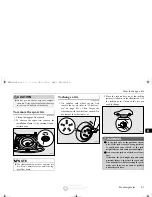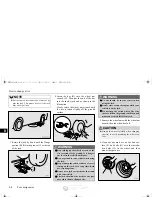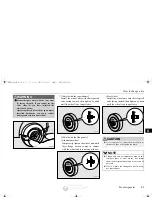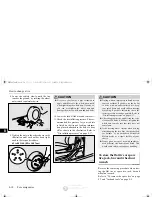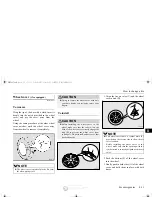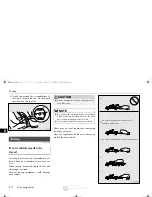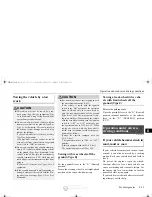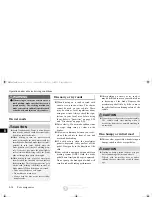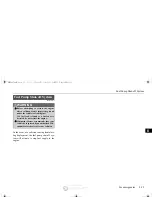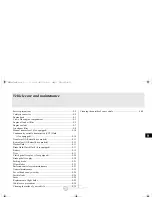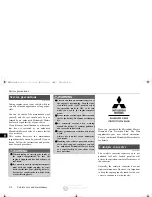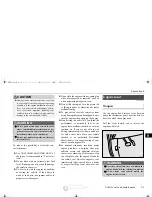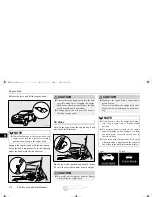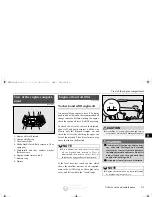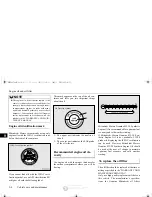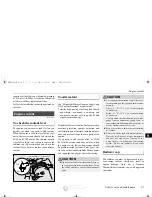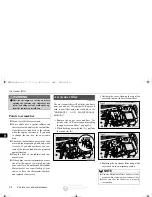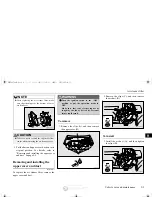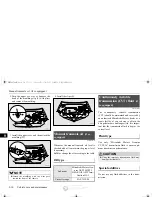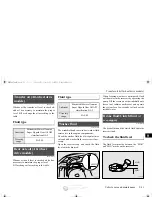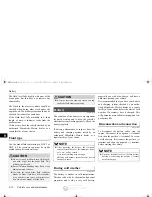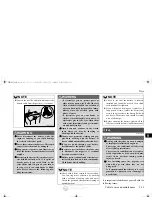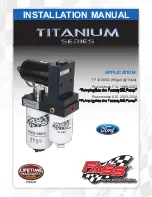
Operation under adverse driving conditions
8-14
For emergencies
8
When driving on a road covered with
snow or ice, use snow tires. Tire chains
cannot be used on your vehicle. There
may be state or local regulations about
using snow tires. Always check the regu-
lations in your local area before using
them. Refer to “Snow tires” on page 9-20
and “Tire chains” on page 9-20.
Drive slowly. Do not make sudden starts
or stops, sharp turns, or slam on the
brakes.
Allow extra distance between your vehi-
cle and the vehicle in front of you, and
avoid sudden braking.
If a skid occurs when the accelerator
pedal is depressed, take your foot off the
pedal. Steer gently in the direction of the
skid.
Your vehicle is equipped with an anti-lock
braking system (ABS). Hold the brake
pedal down firmly and keep it depressed.
Do not pump the brake pedal which will
result in reduced braking performance.
After parking on snowy or icy road, it
may be difficult to move your vehicle due
to freeze-up of the brake. Depress the
accelerator pedal little by little to move
the vehicle after confirming safety of the
vehicle.
Drive as slow as possible when driving on
bumpy, rutted roads or over potholes.
WARNING
When trying to rock your vehicle out of a
stuck position, make sure that there are no
people nearby. The rocking motion can
make your vehicle suddenly lurch forward
or backward, and injure any bystanders.
On wet roads
CAUTION
Avoid flooded roads. Water is often deeper
than it looks, and you could be seriously hurt
by driving into flood water.
When driving in rain, on water-covered
roads, or through a car wash, water could get
into the brake discs and make them fail tem-
porarily. In such cases, lightly press the
brake pedal to see if they are working prop-
erly. If they are not, press the pedal lightly
several times while driving to dry the brake
pads or linings, then check them again.
When driving in rain, a layer of water may
form between the tires and the road surface
(hydroplaning). This loosens your tires’ grip
on the road, making it difficult to steer or
brake properly. When driving on a wet road:
• Drive your vehicle at a safe speed.
• Do not drive on worn tires.
• Always keep the tires at the correct infla-
tion pressures.
On snowy or icy roads
CAUTION
Do not depress the accelerator pedal rapidly.
The vehicle could start moving when it
breaks free from the ice, possibly resulting in
an accident.
On a bumpy or rutted road
CAUTION
Driving on bumpy, rutted roads or over pot-
holes can damage the tires and wheels.
Wheels with low-profiles tires or under-
inflated tires are especially at risk for dam-
age.
BK0206700US.book 14 ページ 2014年3月25日 火曜日 午後4時42分
Summary of Contents for 2015 OUTLANDER SPORT/RVR
Page 247: ...BK0206700US book 14 ページ 2014年3月25日 火曜日 午後4時42分 I n f o r ma t i o nP r o v i d e db y ...
Page 323: ...BK0206700US book 16 ページ 2014年3月25日 火曜日 午後4時42分 I n f o r ma t i o nP r o v i d e db y ...
Page 371: ...BK0206700US book 6 ページ 2014年3月25日 火曜日 午後4時42分 I n f o r ma t i o nP r o v i d e db y ...

